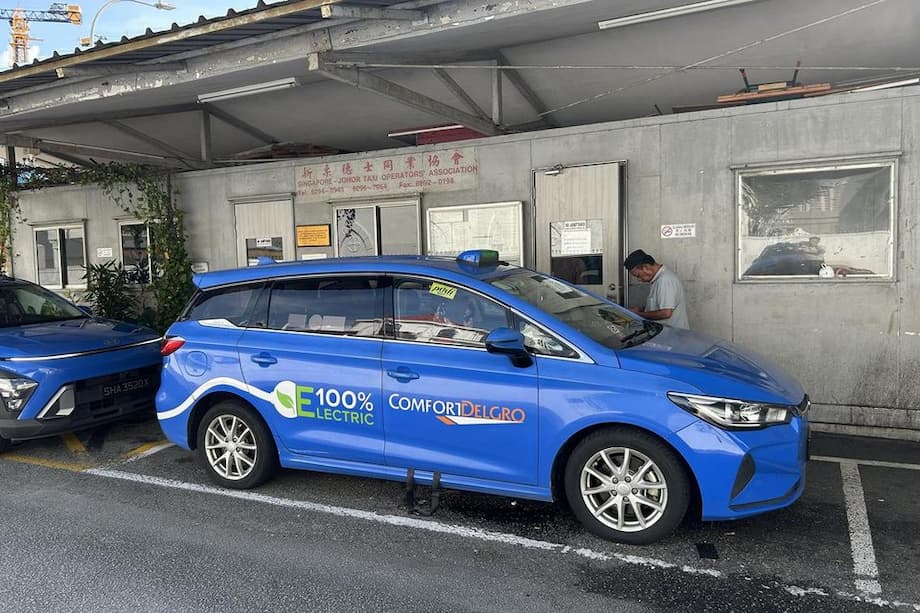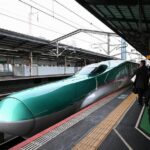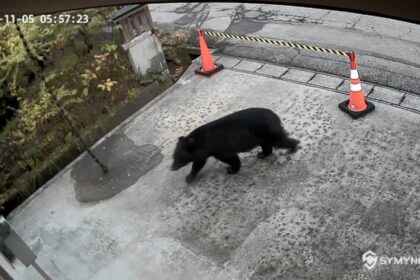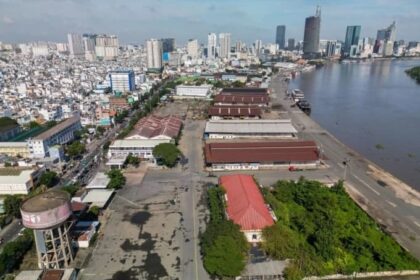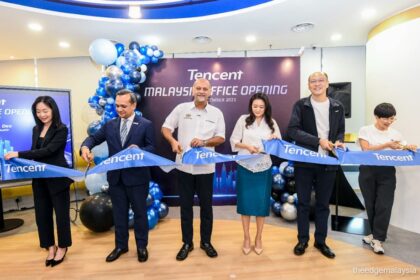What sparked the new push on cross border taxis
Singapore is weighing whether the next phase of its Electronic Road Pricing system, known as ERP 2.0, can help deter illegal cross border taxi trips. The idea emerged from recent discussions between transport officials and industry groups about how to improve regulated services between Singapore and Johor Bahru while protecting local drivers from unfair competition. Authorities and driver associations agree that the current system leaves gaps for illegal point to point services to operate, especially when demand peaks.
- What sparked the new push on cross border taxis
- How ERP 2.0 tracking could be used
- Rules today and where travelers can board taxis
- The case for tightening, fairness and safety
- The case for loosening, convenience and unmet demand
- Could app booking and shared standards bridge the gap
- Why not open the border to ride hailing cars
- Enforcement and public reaction
- What happens next
- The Bottom Line
At the heart of the talks is location tracking. Since 2023, Singapore registered cars and taxis have been fitted with on board units, or OBUs, which record where and when vehicles travel. Malaysian vehicles entering Singapore do not currently need an OBU. Officials and driver representatives explored whether ERP 2.0 data could help flag unauthorized point to point trips carried out by foreign registered vehicles inside Singapore, and how to do so without creating new burdens for legitimate drivers.
Demand is real. Associations say large families, seniors who need door to door assistance, and business travelers often find the current cross border taxi scheme too rigid. The Land Transport Authority, or LTA, has said there are Singaporeans willing to pay for such trips and drivers ready to serve them, if rules are updated. Enforcement has also stepped up. Between 2022 and July 2025, 136 drivers were caught for illegal cross border services, with foreign registered vehicles impounded in some cases. While Singapore and Malaysian officials are discussing improvements, there are no plans to fully liberalise cross border ride hailing. Any changes will focus on licensed taxis and defined operating rules.
How ERP 2.0 tracking could be used
ERP 2.0 is a major upgrade to Singapore’s road pricing system. The new OBUs use satellite positioning and secure communications to identify where a vehicle is, then apply rules for charging and traffic management. Over time, ERP 2.0 is expected to support distance based charging and more flexible traffic controls. Because each OBU knows the vehicle’s location, the system can also, in principle, help determine whether a driver is making pickups and drop offs that are not allowed under transport laws.
Officials and driver groups discussed how that capability might translate to enforcement. If a foreign registered vehicle without a taxi licence is found doing point to point trips within Singapore, that vehicle is breaking the law. ERP 2.0 could provide corroborating data for such cases involving Singapore vehicles. The challenge lies with foreign vehicles, which are not required to carry an OBU today. Without an OBU, there is no persistent location trail. Spot checks and ground enforcement continue to be used, but gaps remain.
Some participants and members of the public have floated ideas that range from geofencing sensitive areas to requiring visiting vehicles that provide commercial transport to carry compatible OBUs. Any change would need agreement with Malaysia, because it affects drivers and cars that move across both jurisdictions. Data governance would also be central, with clear boundaries on what is collected, how long it is kept, and who can access it for enforcement.
Rules today and where travelers can board taxis
Cross border taxi operations are governed by a reciprocal scheme. Up to 200 licensed taxis from each side can ferry passengers between Singapore and Johor Bahru. Each side’s taxis can only pick up passengers at designated points in the other country. For now, Singapore taxis pick up and drop off across the border at Larkin Sentral in Johor Bahru. Malaysian taxis do the same at Ban San Street Terminal in Singapore.
The framework was designed for control and predictability, yet it often falls short for modern travel patterns. A family that needs door to door transport from an HDB estate to a holiday rental in Johor may face extra transfers. Mobility issues make transfers harder for seniors. Industry associations have called for adjustments: more pickup and drop off points, a higher taxi quota on both sides, larger capacity vehicles for families and groups, and priority lanes at checkpoints so taxis can clear faster during busy periods.
Authorities are also weighing app based bookings for licensed cross border taxis. That would let riders reserve legitimate taxis via familiar platforms, improve matching, and reduce the incentive to solicit unlicensed rides through informal channels.
Another proposal, backed by driver groups, would allow taxis to drop off passengers anywhere in the receiving country while continuing to pick up only from designated points. Supporters argue that this preserves oversight at the start of each trip while giving riders more practical destinations. Regulators are studying whether that balance can be managed safely and fairly.
The case for tightening, fairness and safety
Illegal point to point operations undercut licensed taxis, according to associations on both sides of the Causeway. Singapore drivers face higher vehicle and compliance costs, including licences, inspections, and insurance tailored to passenger transport. Malaysian drivers benefit from a different cost structure, including lower car prices and running costs, and a weaker ringgit reduces effective costs when paid in Singapore dollars. Illegal operators can use that gap to offer lower fares, pulling riders away from licensed taxis and making it hard for local drivers to sustain their livelihoods.
Safety is another concern. Licensed taxis are subject to vehicle age limits, inspection schedules, and restrictions on modifications, including window tinting. There is also recourse for passengers in the event of disputes or accidents. Industry associations want cross border vehicles to meet a shared baseline of standards, regardless of where the car is registered. They also call for active fare meters and printed or digital receipts in every vehicle so riders can verify charges and keep records.
LTA has said enforcement will remain a priority. In public statements, the agency has emphasized that foreign vehicles which break Singapore laws will face action, and that illegal operations should not become easier as new booking tools are introduced.
Enforcement against foreign vehicles that break Singapore laws will continue.
The case for loosening, convenience and unmet demand
Associations and commuters also see clear benefits in updating the framework to better match how people travel between Singapore and Johor today. Large families appreciate bigger vehicles that can carry luggage and children in a single trip. Seniors visiting relatives may need a car that stops close to the lift lobby or the clinic, and may not be able to carry bags through a crowded terminal. Business travelers value time savings and reliable door to door service when crossing for meetings.
More pickup and drop off points would reduce detours and wait times, especially in districts with high travel demand such as Iskandar Puteri or industrial estates in the west of Singapore. Allowing taxis to use public transport lanes near checkpoints during peak hours could shorten queues, improving trip reliability without displacing buses. Letting taxis drop off anywhere on the other side, while keeping pickups to designated points, could give riders a better experience while preserving oversight at the start of each trip.
App based booking for licensed taxis is another bridge solution. It would give riders familiar tools and clearer pricing, and it would help authorities trace bookings to licensed fleets. That trail improves accountability and reduces the appeal of messaging groups or informal brokers who now connect riders and unlicensed drivers.
Could app booking and shared standards bridge the gap
Authorities have discussed partnering with platforms so that licensed cross border taxis can be booked through apps, with fares and routes recorded. This could be tied to mandatory receipts, clear cancellation rules, and active meters visible to riders. The technology is common in domestic ride hailing, and it could be adapted for the cross border context to strengthen compliance and consumer protection.
Associations have urged common standards for any vehicle allowed to carry paying passengers across the border. Suggested requirements include vehicle age ceilings, caps on window tint, limits on modifications, and proof that there are no outstanding traffic fines. Driver vetting and complaint handling would be aligned as well. The goal is to make the experience consistent for riders whether the car is registered in Singapore or Malaysia, while keeping enforcement practical for both regulators.
In a recent statement, LTA underlined that industry support is essential as talks with Malaysia proceed. The agency also reiterated that livelihoods of local drivers must be protected as the framework evolves.
LTA said that as discussions with Malaysian counterparts advance, support from NTA and NPHVA will help protect the livelihoods of local taxi and private hire drivers.
Driver groups say a clearer, app enabled, standards based system would encourage more Singapore taxis, including larger capacity vehicles, to join the cross border service. A bigger licensed pool would make it easier to meet demand during busy periods and reduce the space for illegal operations.
Why not open the border to ride hailing cars
Analysts and transport planners caution against allowing private hire cars to operate freely across the border. Several issues arise. Enforcement becomes harder when many small operators work across two legal systems with different licensing, insurance, and safety rules. It is difficult to inspect and audit drivers who spend only short periods in Singapore streets. Transparent handling of complaints and accidents is more complicated when parties are in different jurisdictions.
There is also a market balance to consider. Taxi ridership in Singapore has yet to recover to earlier peaks, and giving private hire fleets cross border access could further dilute the pool of passengers for licensed taxis. Local taxi firms face higher compliance costs and could be disadvantaged against larger regional platforms that can mobilize more drivers and capital. Cost differences across the border mean Malaysian cars may offer lower fares, which could draw trips away from Singapore drivers.
Commuters still have other choices. Public buses connect key destinations, and the Johor Bahru Singapore Rapid Transit System is slated to open by late 2026. That rail link is designed to move large numbers of people quickly between Woodlands North and Bukit Chagar, and it should ease pressure on road based options during peak travel periods.
Enforcement and public reaction
Clampdowns on illegal transport have grown more visible. According to public reports, 136 drivers were caught for illegal cross border services between 2022 and July 2025, with some foreign registered vehicles impounded. These cases typically involve point to point trips within Singapore by drivers who are not licensed to provide such services. Authorities say checks will continue at hotspots and along routes commonly used by illegal operators.
The discussion about ERP 2.0 has filtered into public debate. Some Singaporeans argue that technology should play a bigger role, including measures that would make foreign vehicles easier to monitor if they offer paid rides inside Singapore. Others worry about privacy or about creating barriers for legitimate visitors.
In online forums, commenters have pushed for firm steps to close loopholes. One suggestion that recurs is to require visiting vehicles engaged in commercial passenger work to carry compatible OBUs so that location rules can be enforced on both sides of the border.
Next step should be to make Malaysian cars install ERP 2.0 OBU.
There are also voices calling for hard limits to keep the playing field even for local drivers, who face higher compliance costs. A comment on a Singapore Facebook group captured the frustration some drivers feel about bearing new technology costs that foreign vehicles can avoid.
Obu them and make them pay and pay like us until they give up.
Political figures in Johor have urged a balanced approach that supports livelihoods on both sides. They argue that drivers who depend on cross border trips should not be pushed out by sudden policy shifts, and that both governments should keep working toward mutually acceptable rules.
What happens next
Talks between Singapore agencies and their Malaysian counterparts are active. The agenda includes app based bookings for licensed taxis, more pickup and drop off points, larger capacity vehicles, and smoother clearance at checkpoints. Authorities in Singapore have repeated that they do not plan to fully liberalise cross border ride hailing. Instead, the focus is on upgrading the licensed taxi scheme and tightening action against illegal operators.
Any use of ERP 2.0 for enforcement will require careful design, clear data rules, and likely bilateral coordination if foreign vehicles are involved. Driver associations want shared standards on vehicle age, tint, modifications, and fines, as well as mandatory receipts and visible meters. These steps would improve safety and transparency for riders while giving legitimate drivers a fair shot at cross border business.
The coming months are likely to bring incremental changes rather than a wholesale shift. More designated points, a larger quota of licensed taxis, bigger vehicles for families, and an app based booking channel can relieve pressure. Coupled with steady enforcement and clearer standards, those changes could shrink the illegal market and give commuters safer, more predictable choices for trips between Singapore and Johor.
The Bottom Line
- Authorities are exploring whether ERP 2.0 location data can help curb illegal cross border taxi trips inside Singapore.
- Singapore vehicles carry ERP 2.0 OBUs, while Malaysian vehicles are not required to install them today.
- Under the reciprocal scheme, up to 200 licensed taxis from each side operate between Ban San Street Terminal and Larkin Sentral.
- Proposals on the table include more pickup and drop off points, higher quotas, larger vehicles, and app based bookings for licensed taxis.
- Driver groups want shared standards across borders, including vehicle age limits, tint rules, and mandatory receipts and active meters.
- LTA says enforcement against foreign vehicles that break Singapore laws will continue, with 136 drivers caught between 2022 and July 2025.
- Analysts caution against opening the route to private hire cars, citing enforcement complexity and risks to the local taxi sector.
- Rail relief is coming, with the Johor Bahru Singapore Rapid Transit System targeted for service by late 2026.
- There are no plans to fully liberalise cross border ride hailing, and discussions focus on licensed taxis within a controlled framework.


